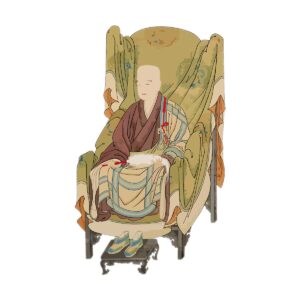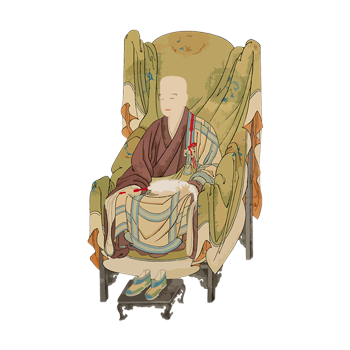
Founder of the Rinzai school of Zen Buddhism in Japan.
He introduced tea from China (Song Dynasty) and wrote “Kocha Yoseiki”.
Born in 1141 (the first year of Eiji).
He was called Senkou and Meian, and was also known as Hagami.
He was a native of Bicchu Province (Okayama Prefecture) and his family name was Kayo.
At the age of 14, he ascended Mt. Hiei to practice Tendai esoteric Buddhism and espoused a branch of the Hagami school, founding Seifukuji in Hakata, Jufukuji in Kamakura, and Kenninji in Kyoto.
In 1168 (Nin’an 3), at the age of 28, he entered the Song dynasty (Sung dynasty), ascended Mount Aikyuo in Tendai, and returned to Japan.
In 1185, at the age of forty-seven, he again traveled to the Sung Dynasty, where he studied for five years under Kyoan Haechang at Mannenji Temple on Mount Tendai, receiving Rinzai Zen training.
After returning to Japan, he was ordered to stop the practice of Daruma Zen, and in 1198, at the age of fifty-eight, he wrote “Kozen Gokoku-ron” (“A Treatise on the Protection of Zen”).
He was revered by Kamakura shoguns Yorike and Sanetomo, and was in charge of the rebuilding of Todaiji Temple.
Eisai returned from the Sung Dynasty in 1191 (Kenkyu 2), and planted tea seeds in Mt.
He died on July 5, 225 (Kenpo 3) at the age of 75.
The first book was written in 1211, when he was 71 years old.
It is said that Shogun Sanetomo recommended tea as a good remedy when he was drunk at his lodgings and presented this book to him.
It is divided into two parts, the “Five Organs of Harmony” and the “Enchantment of the Devil’s Gate”; the former is sometimes called the “Tea Sutra” and the latter the “Mulberry Sutra.
(The former is called the “Tea Sutra” and the latter the “Mulberry Sutra.” (The Complete Collection of Tea Ceremony Classics, 2)



